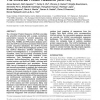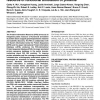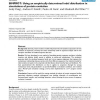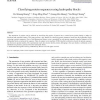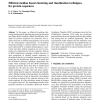NAR
2007
13 years 9 months ago
2007
The Universal Protein Resource (UniProt) provides the scientific community with a single, centralized, authoritative resource for protein sequences and functional information. For...
NAR
2002
2002
The Protein Information Resource: an integrated public resource of functional annotation of proteins
13 years 9 months ago
The Protein Information Resource (PIR) serves as an integrated public resource of functional annotation of protein data to support genomic/proteomic research and scientific discov...
NAR
2002
13 years 9 months ago
2002
The AraC-XylS database contains information about a family of positive transcriptional regulators broadly distributed in bacteria. This specific database focuses on protein sequen...
BMCBI
2005
13 years 9 months ago
2005
Background: Whole-genome sequencing projects are rapidly producing an enormous number of new sequences. Consequently almost every family of proteins now contains hundreds of membe...
BMCBI
2005
13 years 9 months ago
2005
Background: General protein evolution models help determine the baseline expectations for the evolution of sequences, and they have been extensively useful in sequence analysis an...
PR
2006
13 years 9 months ago
2006
The annotation of proteins can be achieved by classifying the protein of interest into a certain known protein family to induce its functional and structural features. This paper ...
PAA
2006
13 years 9 months ago
2006
Abstract In this paper, an efficient K-medians clustering (unsupervised) algorithm for prototype selection and Supervised K-medians (SKM) classification technique for protein seque...
NAR
2006
13 years 9 months ago
2006
The FISH server is highly accurate in identifying the family membership of domains in a query protein sequence, even in the case of very low sequence identities to known homologue...
BMCBI
2007
13 years 9 months ago
2007
Background: We performed an exhaustive search for local structural similarities in an ensemble of non-redundant protein functional sites. With the purpose of finding new examples ...
BMCBI
2007
13 years 9 months ago
2007
Background: Identification of protein interacting sites is an important task in computational molecular biology. As more and more protein sequences are deposited without available...
